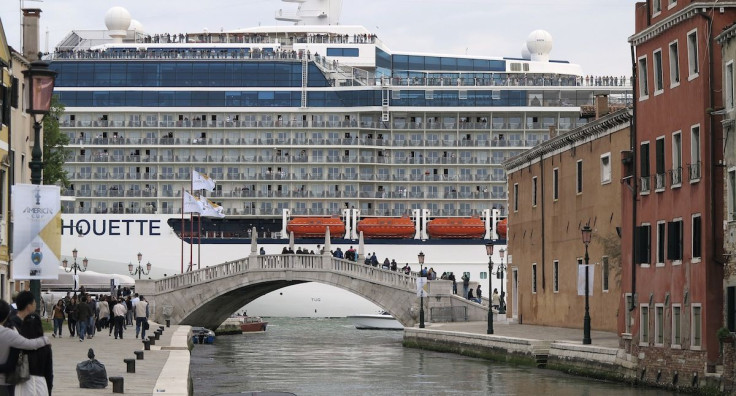World's Most Endangered Heritage Sites In 2013

They range from the famous (Venice, Italy) to the little-known (Pokfulam Village, Hong Kong), to the ancient and remote (Gran Pajaten, Peru) to the urban and modern (Jefferson National Expansion Memorial in St. Louis), but they all share one thing in common: They’re cultural heritage sites at risk from the forces of nature and the impact of social, political and economic change.
New York-based World Monuments Fund, or WMF, released its biannual 2014 World Monuments Watch List Tuesday to alert global citizens of the plight of 67 sites in 41 countries and territories in all corners of the globe. The Watch List is a call to action that not only raises awareness of a number of distinct preservation challenges -- including a lack of resources, conflict and catastrophe, loss of cultural traditions, and pressures from both urban and rural development and increased tourism -- but also identifies opportunities for local communities to work together with the larger preservation community, corporate sponsors, governmental organizations and others to ensure each site has a long future.
“The 2014 Watch presents a selection of monuments from around the world in need of both new economic resources and innovative ideas about how to preserve them for future generations,” explained WMF President Bonnie Burnham. “These sites -- and countless others like them -- recount our human history and highlight our achievements. It takes vigilance to keep them active in the world; yet it is often the case that the very places that provide rich character and texture to our lives need more assistance and attention than they are given.”
Though normally reserved for individual entries, WMF placed all heritage sites of Syria and Mali on the list this year due to the threat of ongoing conflicts in each nation. These include the 4,000-year-old Aleppo Citadel in Syria, and the historic sites of Timbuktu, Gao and Kidal in Mali.
Venice, Italy, meanwhile, made the list for a wholly different reason: economics. Many heritage experts believe the advent of large-scale cruise ship tourism over the last decade has pushed Venice to an environmental tipping point, while undermining the quality of life of its citizens. Cruise ship tourism has increased by 400 percent over the past five years alone, with about 20,000 visitors a day in peak season, according to WMF.
Tourism poses a different threat to Yangon, Myanmar, where a mad rush to develop real estate and turn the city into the next big tourist destination endangers the historic center’s century-old buildings. WMF believes rampant commercial development “could destroy the aura of the colonial city center and result in the demolition of its historic landmarks.” The organization said Dar es Salaam, Tanzania, and Berlin were at similar turning points, and urged a thoughtful and well-balanced integration of cultural resources and new development.
Similarly, WMF advised the United Kingdom to consider utilizing three former industrial sites -- Grimsby Ice Factory, Battersea Power Station and Deptford Dockyard -- as magnets for cultural and community development.
Across the Atlantic, the heritage group urged continued vigilance along the scenic Hudson River Palisades in New York and the St. Louis Arch in Missouri. The Palisades, it said, is threatened by new high-rise construction projects, while the Arch needs funding to deal with encroaching corrosion. Other U.S. sites included on the 2014 Watch List include the Chinati Foundation in Marfa, Texas, George Nakashima House in Bucks County, Pa., Frank Lloyd Wright’s Taliesin in Spring Green, Wis., and the Henry Klumb House in San Juan, Puerto Rico.
WMF’s panel of international heritage experts in the fields of archeology, architecture, art history and preservation have identified more than 740 sites in 133 countries and territories since the World Monuments Watch program began in 1996. The organization’s contribution to endangered sites has surpassed $90 million, while allocations from other entities brings that number closer to $300 million.
© Copyright IBTimes 2025. All rights reserved.






















